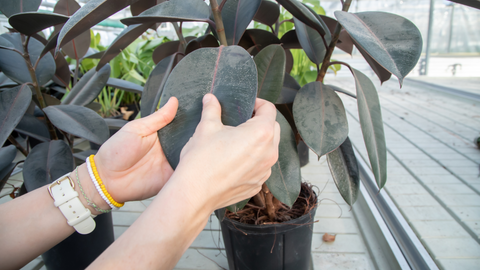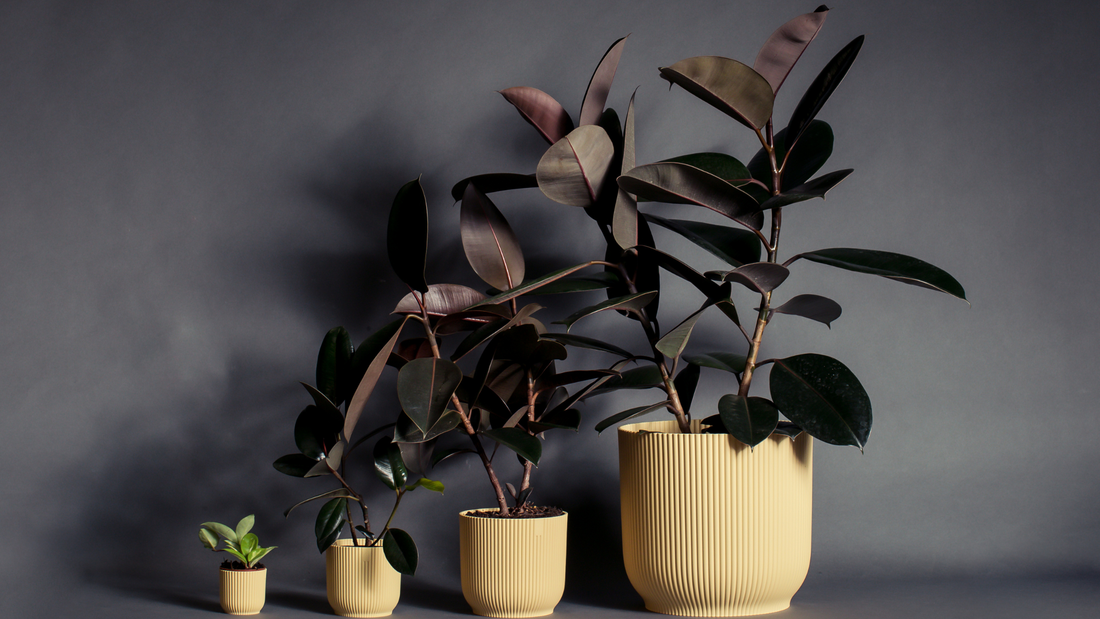Origin Story
Rubber Tree Plants belong to the Ficus genus, which includes many species of Fig trees. They are native to Southeast Asia, particularly in countries like India, Indonesia, and Malaysia. The name "Rubber Tree" comes from the latex sap they produce, which was once used to make rubber. Like many indoor plants, Rubber Tree Plants can help improve indoor air quality by removing pollutants from the air, making them a valuable addition to any home or office space. Rubber Tree Plants are a popular choice for both beginner and experienced plant enthusiasts due to their unique dark foliage and relatively low maintenance requirements.

Is a Rubber Tree an easy houseplant to care for?
The Rubber Tree's reputation as an easy-to-care-for and gratifying house plant stems from its adaptability, low-maintenance needs, and air-purifying abilities. By providing your Rubber Tree with proper light, water, and occasional pruning, you can enjoy the beauty and advantages of your Rubber Tree for many years to come!
What sunlight does a Rubber Tree require?
Rubber Tree Plants prefer bright to moderate indirect light. They can tolerate some shade, but they grow best with plenty of filtered sunlight. Place your rubber tree close to a south-facing window or your brightest alternative. Avoid placing them in direct sunlight, as it can scorch their leaves.

How much watering is required for a Rubber Tree?
Water your Rubber Tree with care. This means allowing the top inch of the soil to dry before watering. Overwatering can be detrimental, leading to root rot, so it's crucial to let the soil partially dry out between waterings. During the active growing season (Spring and Summer), your Rubber Tree will need more frequent watering as it becomes thirstier. However, in the dormant season (Fall and Winter), the plant will retain water better, allowing you to reduce the watering frequency.
When you notice the plant's leaves curling inward or the soil becoming dry, it's an indication that you should increase the frequency of watering. On the other hand, if the leaves start dropping or the soil remains wet, it's a signal to reduce the frequency of your watering schedule.
Does a Rubber Tree need humidity?
While Rubber Trees can adapt to average indoor humidity, providing higher humidity levels will help keep their foliage healthy and vibrant. It is especially beneficial during winter when indoor heating can lead to drier conditions. Did you know that grouping plants together can create a microenvironment with higher humidity as the plants collectively release moisture into the air, isn't that cool?!

Can I put my Rubber Tree outside?
Yes! You can definitely put your Rubber Tree outside during the summer months! If your Rubber Tree has been growing indoors, it's essential to acclimate it gradually to the outdoor conditions. Sudden changes in light, temperature, or humidity can shock the plant. Start by placing it in a shaded and sheltered spot, then gradually increase its exposure to outdoor conditions over a few days. Keep a close eye on it during this process; it's better to be safe than sorry!
A Rubber Tree's preference is to be in bright, indirect light, meaning it's important to find a location with filtered sunlight, such as under a covered porch or pergola. Avoid placing your Rubber Tree in direct sunlight, as intense sun exposure can lead to leaf burn and distress your plant.
Are Rubber Trees safe for pets?
Rubber Tree Plants are considered mildly toxic to pets, including dogs and cats. The milky white sap found in their leaves contains compounds called ficin and proteolytic enzymes, which can cause mild irritation if ingested by pets.
If your furry friend happens to nibble on the rubber tree leaves, it may experience symptoms such as drooling, vomiting, or mild upset stomach. In most cases, the effects are not severe and subside relatively quickly.









